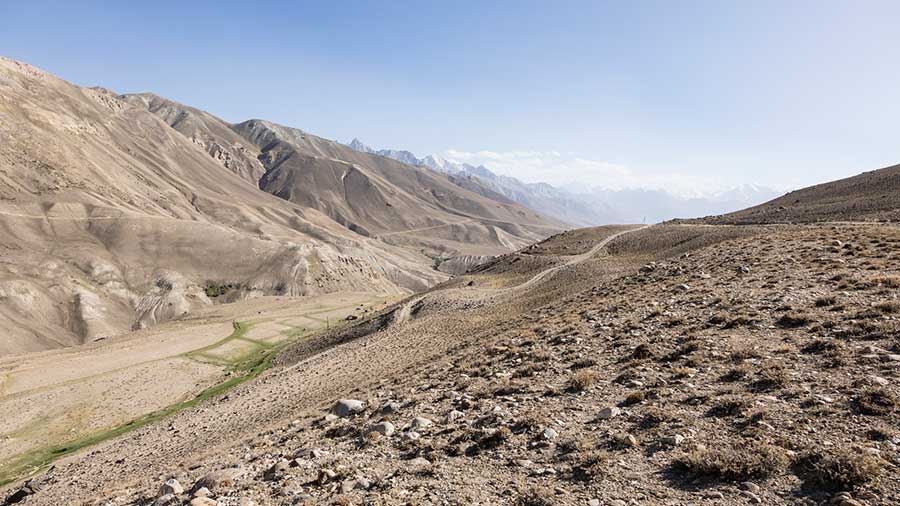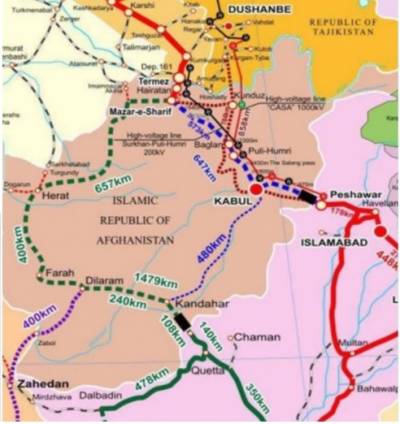Pakistan, Afghanistan & Uzbekistan Agree 573km Connecting Railway

An Afghanistan vista of part of the proposed route
- Trans-Afghan Railway To Provide Links From Russia, Uzbekistan Through Pakistan To The Arabian Gulf
Pakistan, Uzbekistan, and Afghanistan have agreed to a roadmap for the building of a 573-kilometer route from Mazar-e-Sharif to Peshawar, via Kabul. The project, at an estimated cost of US$5 billion, will open Pakistani seaports on the Arabian Gulf to Uzbekistan and continue Afghanistan’s gradual integration into the Central Asian economic system. We have previously discussed Uzbekistan’s desire to use Pakistan’s Gwadar and Karachi Ports as a gateway to the Arabian Sea in the article here.
In Uzbekistan, the Central Asian, landlocked country, the deal has been called the “event of the century” by Tanzila Narbaeva, the Chairman of the national Senate, noting it as “another example of Uzbekistan actively pursuing an open and pragmatic foreign policy.”
There are however significant infrastructure and logistics difficulties ahead. The route traverses the Hindu-Kush range and reaches an altitude of 3,500 meters, making it one of the highest railroads in the world when completed. The route is a test of supply chain capabilities, while the ability to attract laborers and companies to work in Afghanistan will not be easy, where the Taliban still holds substantial regional power. For example, the Taliban recently held talks with Turkmenistan over energy supplies to the Taliban-held areas of Afghanistan and discussed security of the Turkmenistan-Afghanistan-Pakistan-India (TAPI) pipeline. That means money. That said, the commitment of Pakistan and Uzbekistan to the project also signals confidence in the continued stability of Afghanistan.
Another issue relates to the variable gauges of the railway and its connections with Uzbekistan. Uzbekistan uses the Russian, 1520mm gauge, while Pakistan uses 1676 mm gauge. In 2010, Afghanistan opted to build using the international standard, 1435 mm, gauge. Dealing with that requires planning, although China has been developing multi-gauge bogies. Otherwise, this means that any use of existing track must allow for reloading of cargo onto different trains at border points.
The implementation of the Mazar-e-Sharif-Kabul-Peshawar railway line will reduce the time and cost of transporting goods along the existing highway between Mazar-i-Sharif and Kabul, while power lines from Uzbekistan and Tajikistan are also being extended to Kabul and across Afghanistan. A railway will reduce transit times by an estimated 30%. It also reduces the delivery time of goods from the Russian border (Ozinki) to Karachi to 16-18 days, and from Termez to Karachi, 8-10 days. Rail traffic volume is expected to reach 10 million tons.

China’s Belt & Road Initiative expertise will prove useful. China spent billions in creating the inland port at Khorgos, which provides access to Kazakhstan. At Khorgos, Chinese engineers created a system using cranes to move cargo between different rail gauges to bridge the gauge gap. China is also familiar with building infrastructure across difficult terrain. Just yesterday we discussed the Dongshan Tunnel, which at 4,200 meters is the highest in Asia, in the Qilian Mountains. China also has considerable experience of building infrastructure in Pakistan, and is seems likely the trans-Afghan railway will intersect with this. China however is not providing the finance on this occasion – Uzbekistan has announced that the Mazar-e-Sharif-Peshawar line will be financed almost entirely by the World Bank.
Related Reading
About Us
Silk Road Briefing is written by Dezan Shira & Associates. The firm has 28 offices throughout Asia, and assists foreign investors into the region. For strategic advisory and business intelligence issues please contact the firm at silkroad@dezshira.com or visit www.dezshira.com





